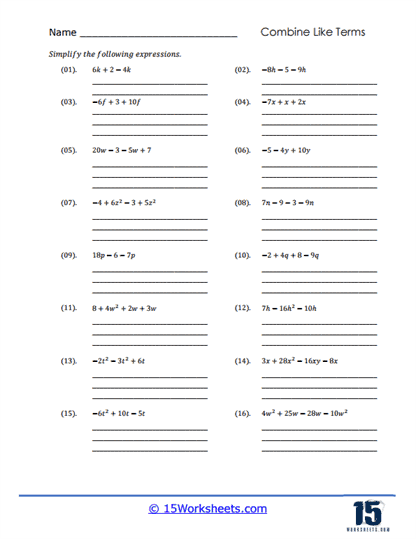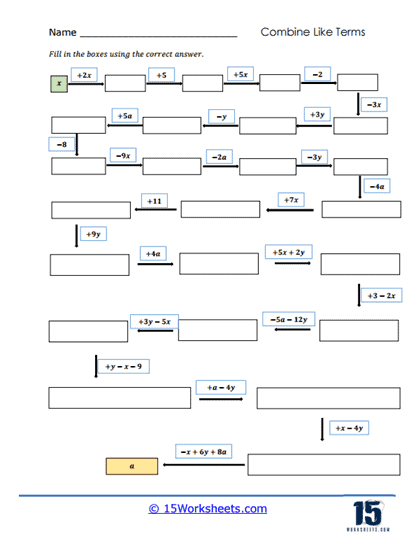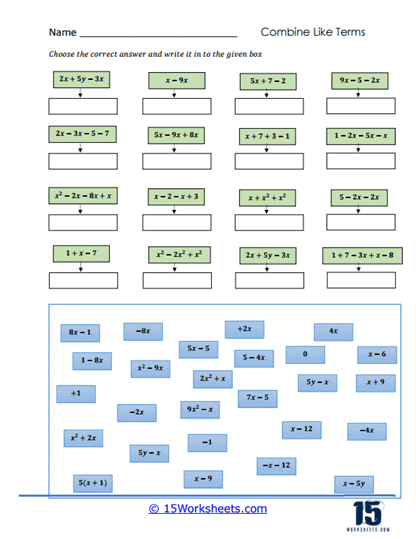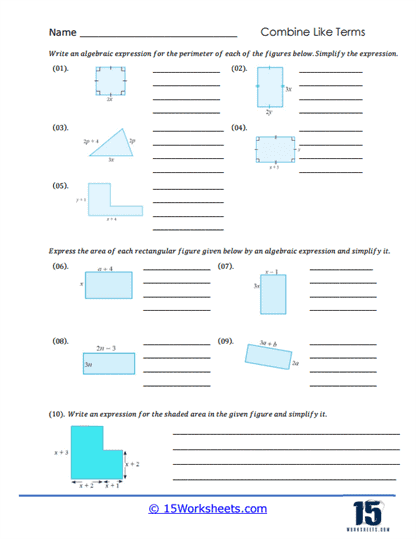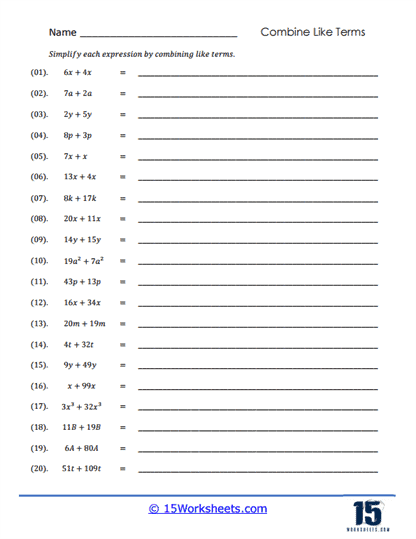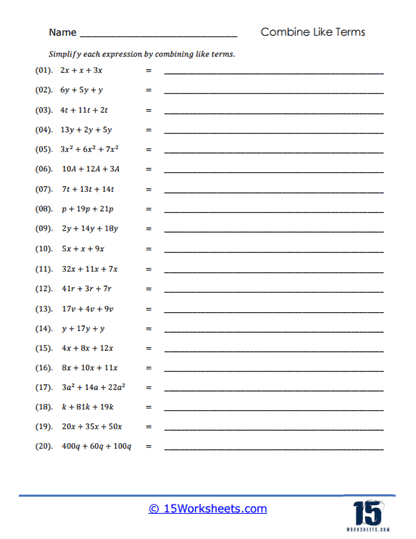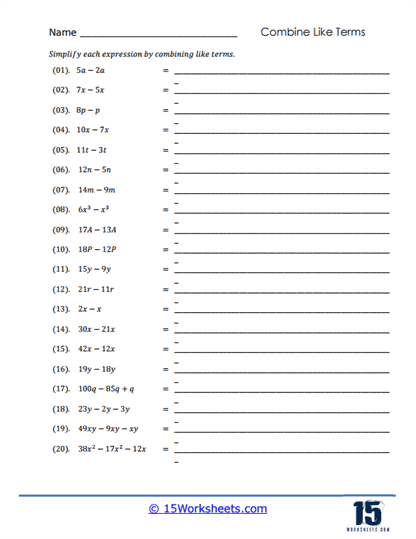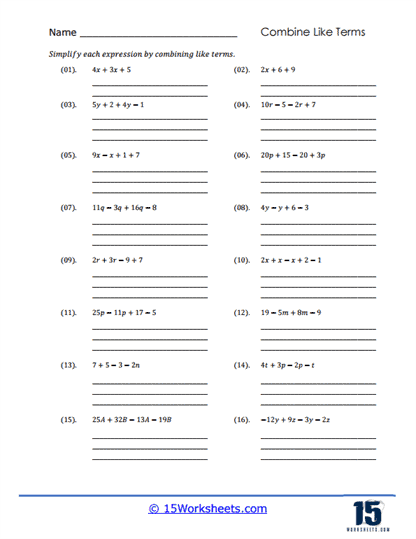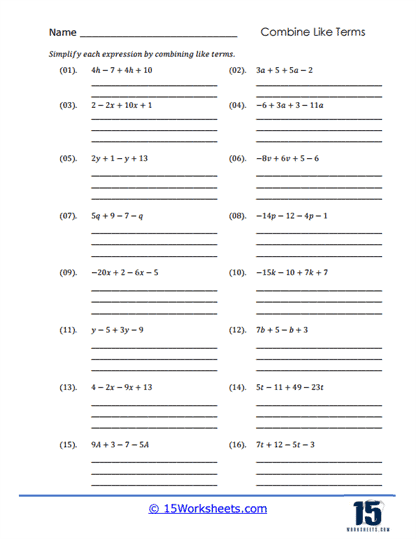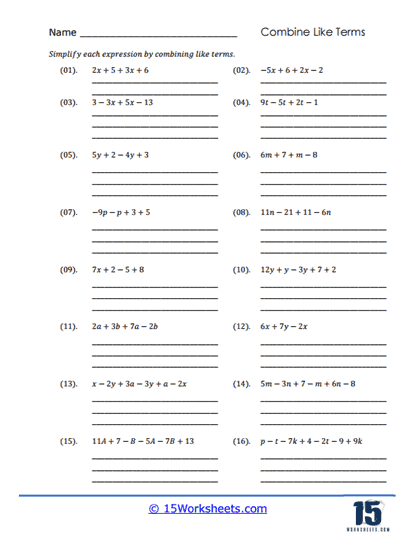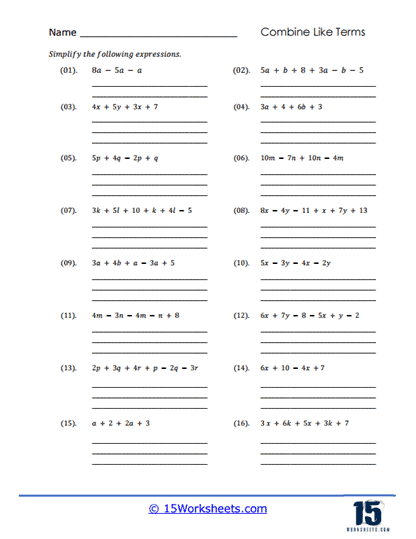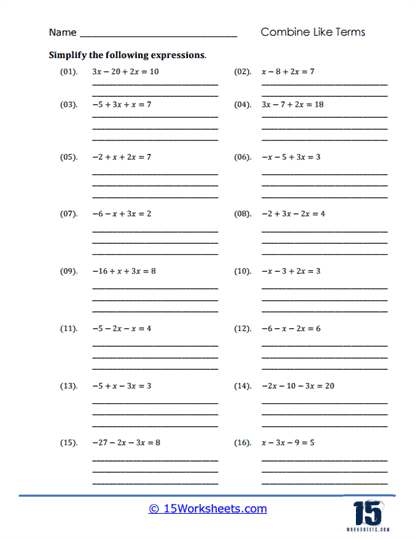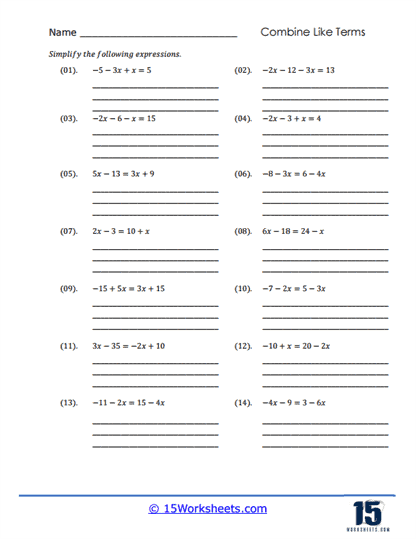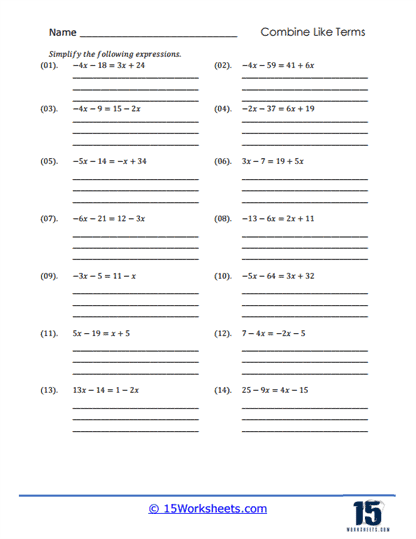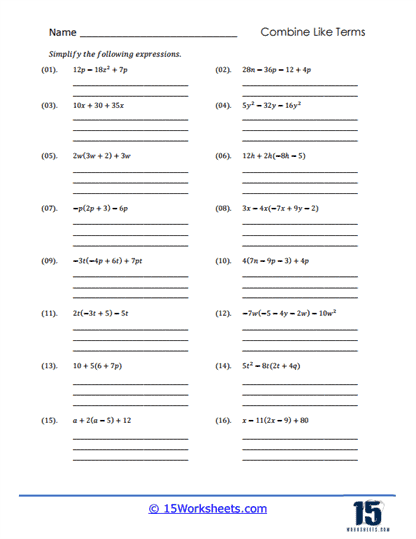Combining Like Terms Worksheets
About These 15 Worksheets
These worksheets will teach students how to simplify algebraic expressions by grouping similar terms. These worksheets focus on building students’ foundational understanding of algebra by helping them recognize and organize terms that share the same variable and exponent. Through a wide variety of problem sets, students develop the skill of identifying like terms, performing basic arithmetic operations on them, and simplifying the expressions to make them more manageable.
Term Transformer kicks off our quest, acting as the magical gateway where students learn to morph chaotic expressions into simplified elegance. It’s like giving a messy room a makeover-grouping socks with socks, hats with hats, or in this case, x’s with x’s. The transformation is both satisfying and foundational, setting the stage for the algebraic escapades ahead.
Next, we traverse the Algebra Path, a winding trail filled with expressions waiting to be simplified. Along the way, Equation Match challenges students to pair equivalent expressions, turning the exercise into a delightful game of mathematical memory. Then comes Geometry Jumble, where shapes and algebra collide, requiring learners to apply their term-combining skills to geometric figures-because who said algebra and geometry can’t be best friends?
As we delve deeper, Term Tackler and Algebra Adventure present more complex challenges, introducing multiple variables and operations. These worksheets are like the boss levels in a video game, testing students’ mastery and resilience. Variable Venture and Equation Explorer further the excitement, encouraging learners to navigate through intricate expressions and uncover hidden patterns, much like detectives solving a mystery.
The journey continues with Variable Voyage, a voyage through expressions that require keen eyes and sharp minds. Term Mixer stirs the pot, blending terms in unexpected ways, while Equation Crunch adds a time-pressured twist, pushing students to combine terms swiftly and accurately. Term Twist throws in a plot twist, presenting expressions that seem unfamiliar but are just waiting to be unraveled.
Finally, we reach the pinnacle with Expression Solver, Term Tamer, and Algebra Merge. These culminating worksheets are the ultimate test, where students demonstrate their prowess in simplifying expressions, taming wild terms, and merging algebraic elements into harmonious solutions. It’s the grand finale, the moment where all the skills acquired come together in a symphony of mathematical mastery.
In this enchanted land of algebra, each worksheet is a chapter in a story where students are the heroes, variables are the characters, and combining like terms is the magic that brings order to the chaos. So grab your pencil, don your thinking cap, and set forth on this epic adventure-because in the world of algebra, every term has a place, and every student has the power to simplify.
As students progress through these worksheets, they encounter more complex and longer expressions with multiple terms. These problems often require several steps to simplify fully, allowing students to practice organizing their work and following a clear, logical sequence of steps. This type of problem reinforces the importance of patience and precision in solving algebraic expressions and prepares students for higher-level algebra courses.
What are “Like Terms”?
Like terms are algebraic terms that share the exact same variables, each raised to the same powers.
What sets them apart isn’t the variable part-they must match exactly-but the numbers in front, called coefficients, which can be added or subtracted.
Understanding like terms is a key step in simplifying expressions because it allows you to group and combine parts of an equation in a meaningful way.
Examples of Like Terms
3x and 5x are like terms (both have just x)
2y2 and -7y2 are like terms (both have y2)
Examples of Unlike terms
x and x2 are not like terms
4x and 4y are not like terms
You combine them by adding or subtracting the numbers in front of the variables (called coefficients), while keeping the variable part the same.
Examples of Combining Like Terms
(Easy Mode) Expression: 3x + 4x
Step-by-step:
1. Look: both terms are like terms (x and x)
2. Add the numbers in front: 3 + 4 = 7
3. Keep the x
Final Answer: 7x
(Medium Mode) Expression: 2y + 3 + 5y – 4
Step-by-step:
1. Group like terms: Like terms with y: 2y + 5y
Constant numbers (no variable): +3 – 4
2. Add them separately:
2y + 5y = 7y
3 – 4 = -1
Final Answer: 7y – 1
(Harder Mode) Expression: 6x2 + 3x – 2 + 4x2 – 5x + 7
Step-by-step:
1. Group the like terms:
6x2 + 4x2 (both are x2)
3x – 5x (both are x)
-2 + 7 (constants)
2. Combine each group:
6x2 + 4x2 = 10x2
3x – 5x = -2x
-2 + 7 = 5
Final Answer: 10x2 – 2x + 5

